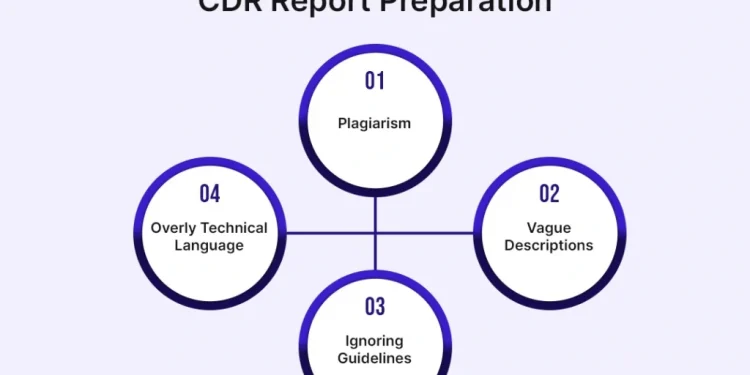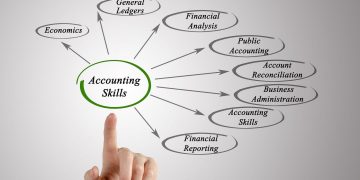Preparing a Competency Demonstration Report (CDR) is a crucial step for engineers seeking skilled migration to Australia. While many applicants put significant effort into this process, certain common mistakes can undermine their chances of success. In this article, we’ll explore these pitfalls and provide guidance on how to avoid them, ensuring your CDR effectively showcases your skills and experience.
1. Neglecting Guidelines
One of the most critical mistakes is failing to adhere to the guidelines provided by Engineers Australia. Each assessing authority has specific requirements regarding the format, structure, and content of the CDR.
Tips to Avoid This Mistake:
- Thoroughly Review Requirements: Before you start writing, familiarize yourself with the guidelines. Check for details on required sections, formatting, and length.
- Use Templates Cautiously: While templates can provide a helpful framework, ensure that your CDR aligns with the specific requirements rather than relying solely on generic formats.
2. Lack of Specificity
Vague descriptions of your experiences can weaken your CDR. Assessors need clear and concrete examples to understand your skills and competencies.
Tips to Avoid This Mistake:
- Be Detailed: Provide specific examples of projects you’ve worked on, your roles, and the outcomes. Use technical language and metrics where applicable to illustrate your achievements.
- Reflect on Your Contributions: Focus on your individual contributions to projects rather than general team accomplishments. Highlight your problem-solving skills and technical expertise.
3. Inadequate Career Episodes
The career episodes are the heart of your CDR, and many applicants fail to make them impactful. A common error is to treat them as mere project descriptions rather than as opportunities to demonstrate competencies.
Tips to Avoid This Mistake:
- Structure Each Episode: Follow a clear structure for each career episode: Introduction, Background, Personal Engineering Activity, and Conclusion. This format helps guide the reader through your experiences.
- Link to Competencies: Ensure that each career episode explicitly addresses the required competencies. Clearly state how your experiences relate to these competencies in your summary statement.
4. Ignoring the Importance of CPD
Continuing Professional Development (CPD) is crucial for demonstrating your commitment to lifelong learning and professional growth. Some applicants overlook this section or provide inadequate details.
Tips to Avoid This Mistake:
- List Relevant Activities: Include a variety of CPD activities, such as courses, workshops, seminars, and certifications. Make sure they relate to your engineering field.
- Reflect on Learning Outcomes: For each CPD activity, briefly explain what you learned and how it has contributed to your professional development. This reflection can enhance the overall impact of your CDR.
5. Overlooking the Summary Statement
The summary statement is your opportunity to connect your career episodes to the required competencies. Many applicants either neglect this section or fail to use it effectively.
Tips to Avoid This Mistake:
- Directly Address Competencies: Clearly map each career episode to the relevant competencies, providing a concise explanation of how your experiences demonstrate each one.
- Be Concise and Focused: Keep your summary statement clear and to the point, ensuring it serves as a strong linkage between your career episodes and the competencies.
6. Failing to Proofread
Grammatical errors, typos, and inconsistencies can detract from the professionalism of your CDR. Submitting a poorly proofread document can raise doubts about your attention to detail.
Tips to Avoid This Mistake:
- Set Aside Time for Revision: After drafting your CDR, take a break before proofreading. This distance can help you spot errors more easily.
- Seek External Feedback: Have colleagues or mentors review your CDR. They can provide valuable insights and catch mistakes you might have missed.
7. Procrastination
Procrastination can be a significant barrier to successfully completing your CDR. Many applicants underestimate the time required to produce a high-quality report, leading to rushed submissions that lack depth and detail.
Tips to Avoid This Mistake:
- Create a Timeline: Set a realistic timeline for each stage of the CDR preparation process. Break down the tasks into manageable steps, allocating specific timeframes for writing, editing, and gathering supporting documents.
- Start Early: Begin your CDR well in advance of the submission deadline. This allows for a more thoughtful and thorough approach, reducing stress and improving the overall quality of your report.
8. Lack of Authenticity
In an attempt to impress assessors, some applicants exaggerate their roles or fabricate experiences. This lack of authenticity can lead to serious consequences if discrepancies are discovered.
Tips to Avoid This Mistake:
- Be Honest and Accurate: Present your experiences truthfully. Highlight your genuine contributions and achievements, even if they may seem less impressive than those of others.
- Reflect Your True Self: Your CDR should be a representation of your professional journey. Authenticity will resonate more with assessors than embellishment.
9. Inadequate Linking of Experiences to Competencies
Failing to explicitly link your career episodes to the required competencies is a common oversight. This disconnect can weaken the overall effectiveness of your CDR.
Tips to Avoid This Mistake:
- Use Clear References: In your summary statement, explicitly reference the competencies associated with each career episode. Make it clear how your experiences demonstrate these competencies.
- Revisit Competency Guidelines: Regularly consult the competency guidelines provided by Engineers Australia to ensure you are addressing all relevant areas.
10. Submitting Without Final Checks
Some applicants rush to submit their CDR without conducting thorough final checks. This oversight can lead to missed errors or incomplete information, negatively impacting your application.
Tips to Avoid This Mistake:
- Conduct a Final Review: Before submitting, do a comprehensive review of your entire CDR. Check that all sections are complete, accurate, and well-organized.
- Confirm Document Requirements: Ensure that all required documents are included with your CDR submission, and verify that you’ve met any specific formatting or submission guidelines.
Conclusion
Avoiding these common mistakes when preparing your Competency Demonstration Report is essential for ensuring a successful migration application. By understanding and addressing these pitfalls, you can create a CDR that effectively showcases your skills, experiences, and competencies.
Remember, a well-prepared CDR not only supports your migration journey but also serves as a valuable reflection of your professional identity. With careful planning, honest reflection, and diligent attention to detail, you can enhance your chances of achieving your goal of living and working in Australia. Take the time to craft a CDR that you can be proud of—one that truly represents your capabilities as an engineer.














